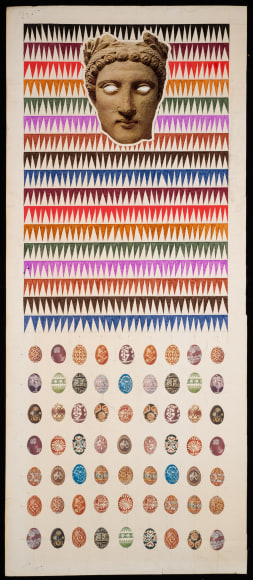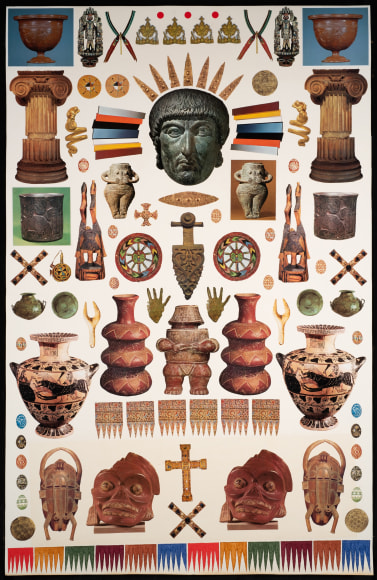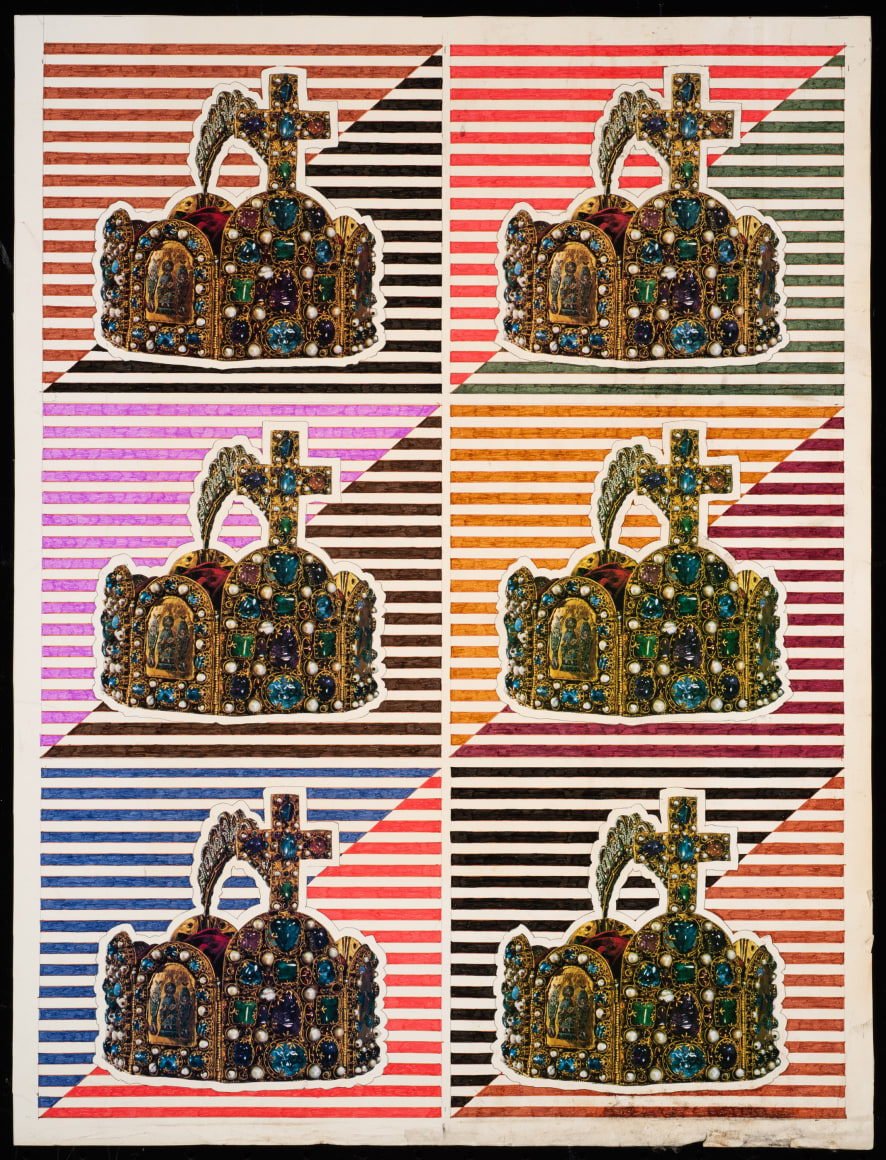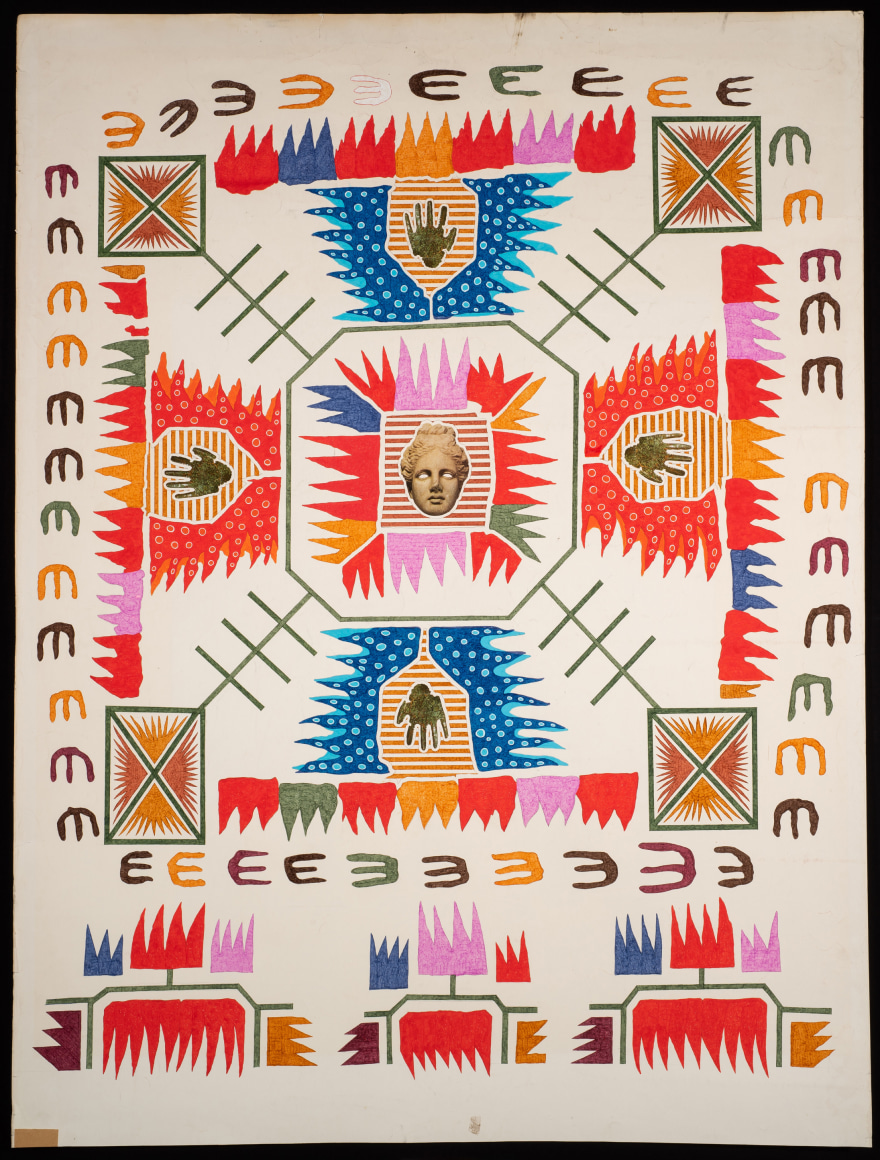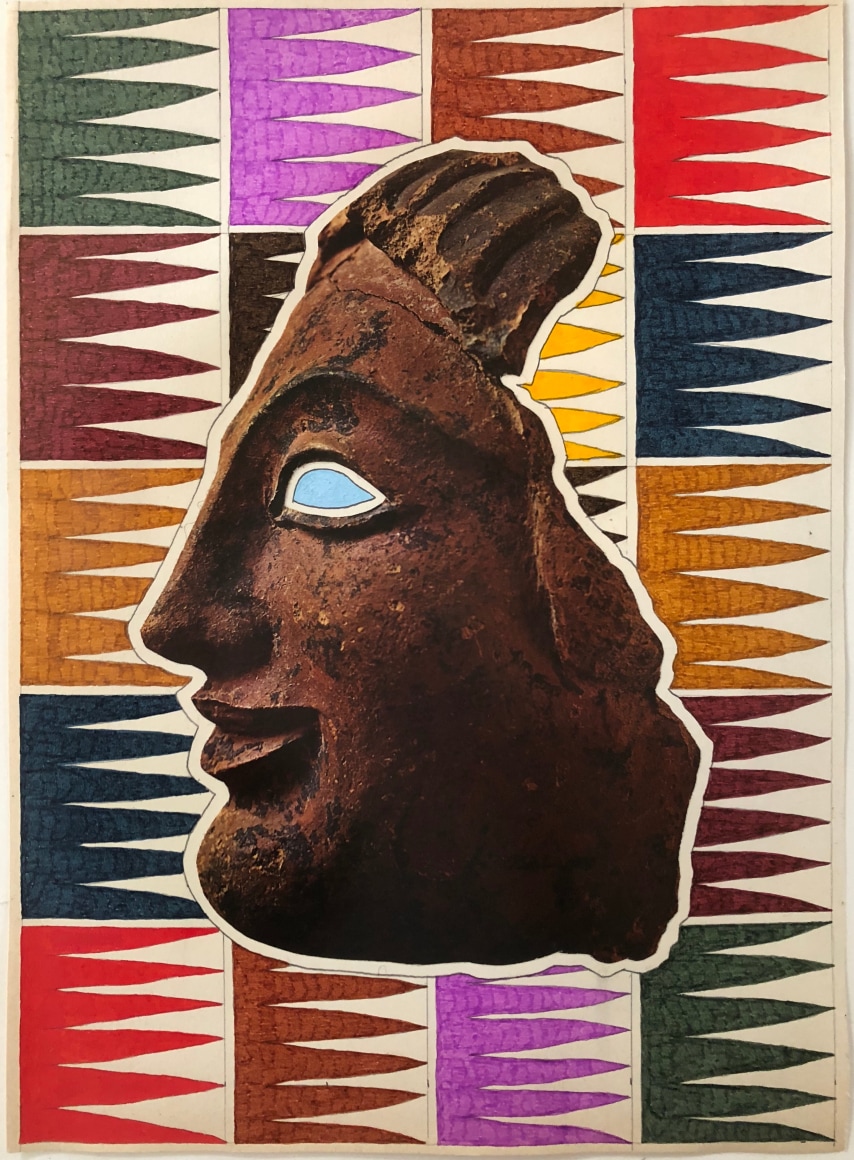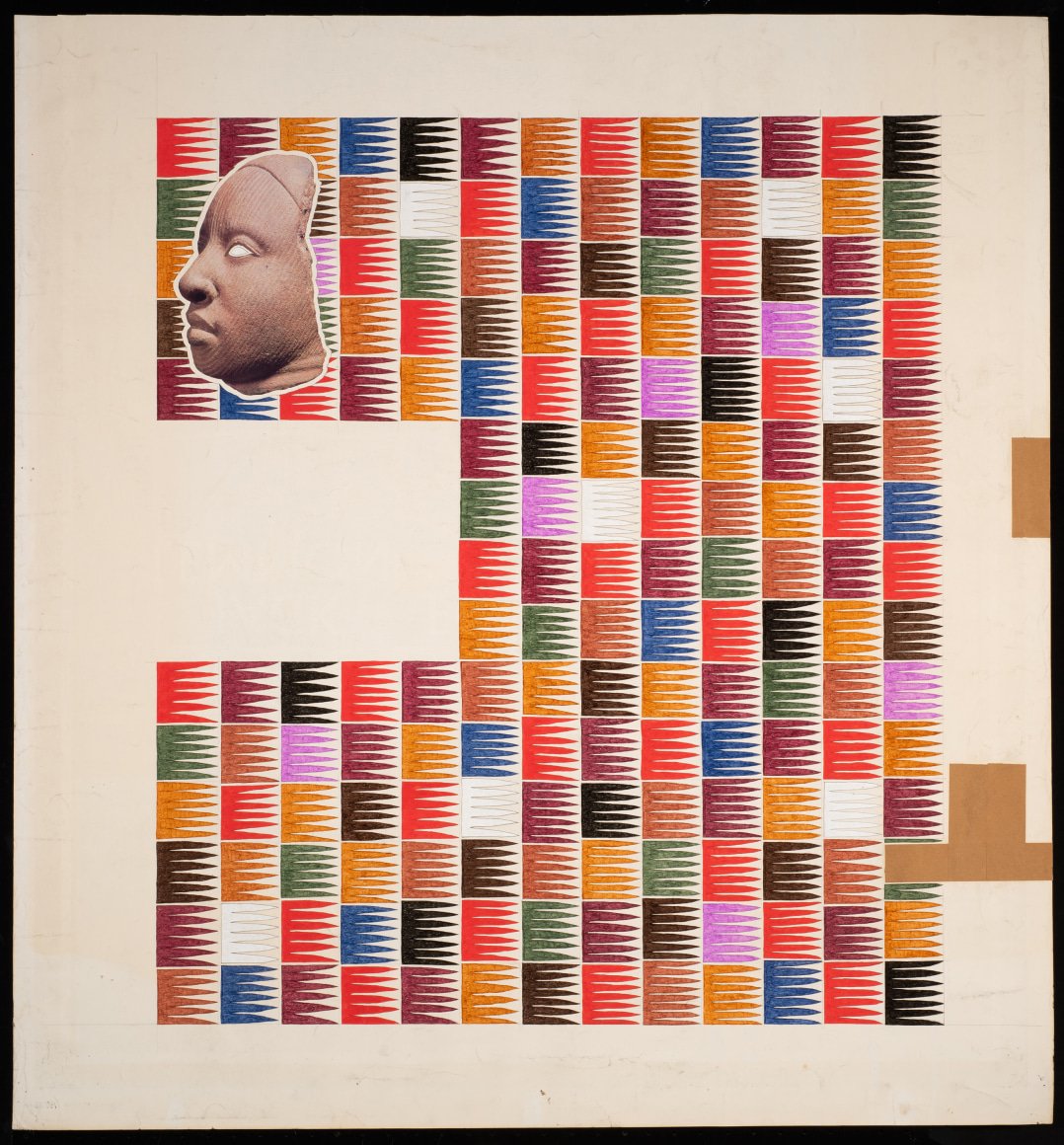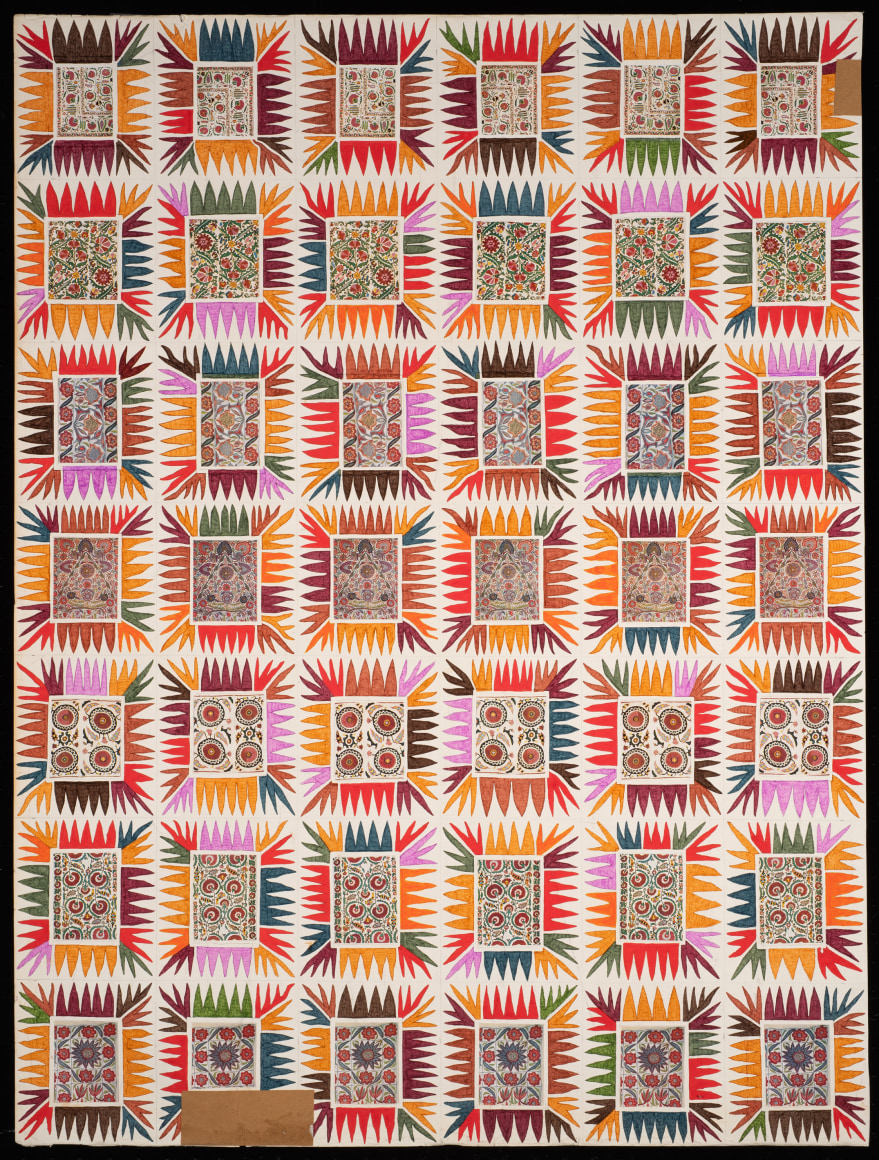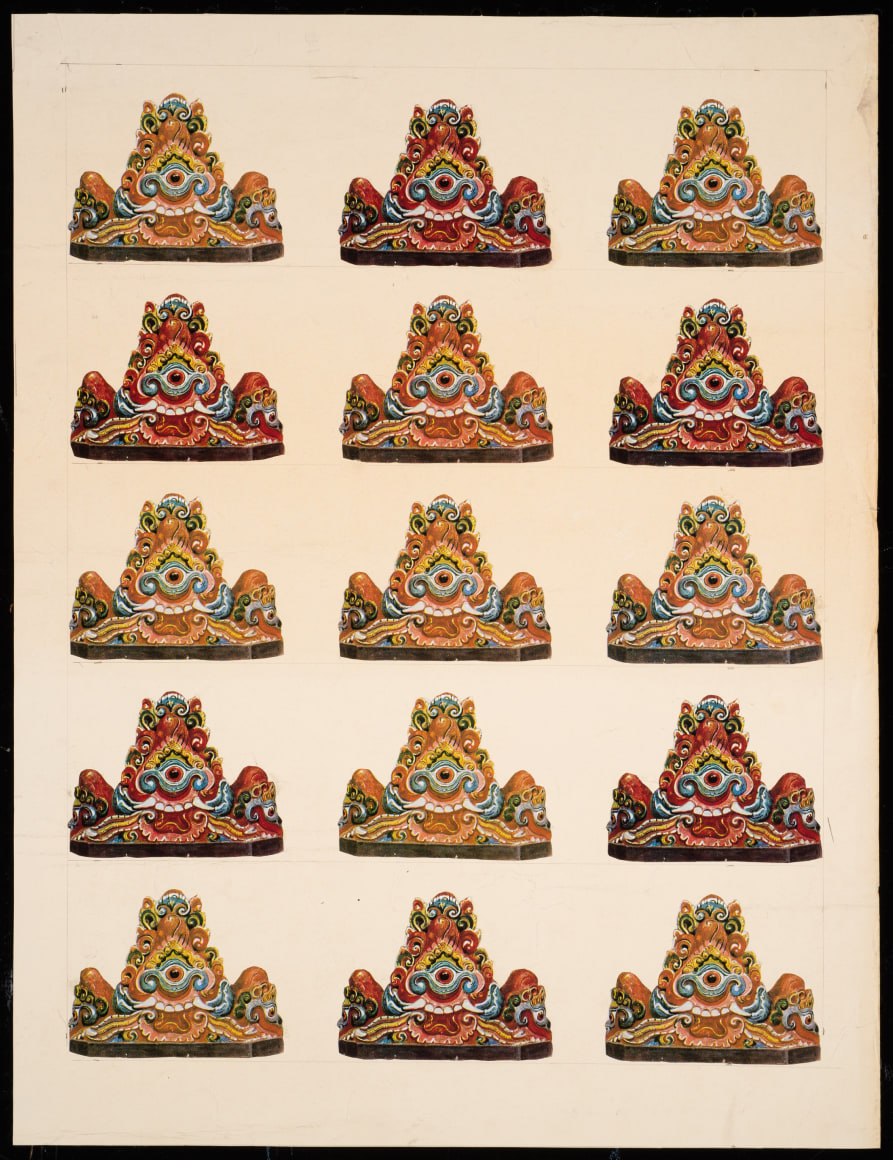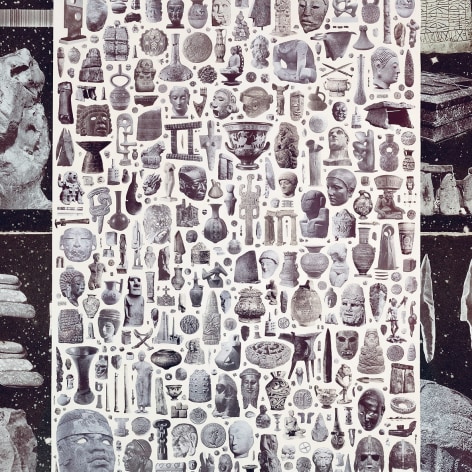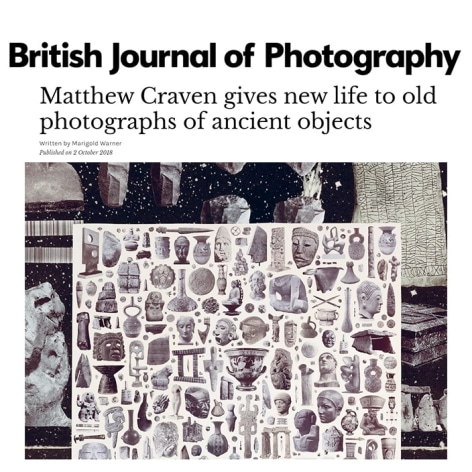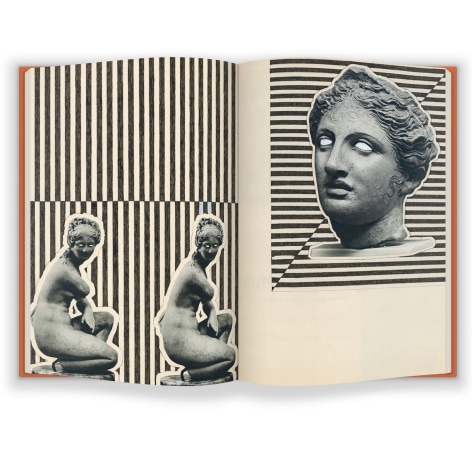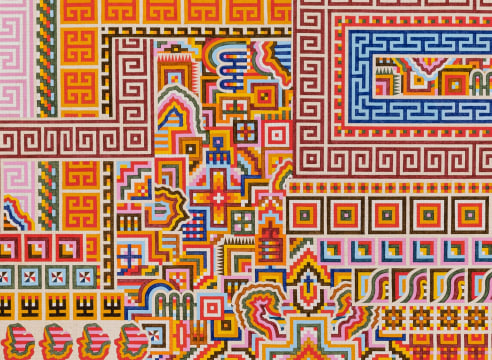
Asya Geisberg Gallery is proud to present Matthew Craven’s second solo exhibition, “EMPIRE(s)”. Well known for his work in drawing and collage using found images from earlier eras, Craven argues for a flattening of imagery and sources, while paradoxically causing astute viewers to pause and wonder at each specific reference. Consistently working with printed materials – encyclopedias, textbooks, and movie posters from the 1950s through the 1970s – his works share a unified physicality: all matte images with a certain color cast, on the verso of equally yellowed posters. In turn, the artist chooses a strict color scheme for each new body of work, and in “EMPIRE(s)” the palette is composed of warm reds, forest greens, royal blues, and golden browns, stemming from antiquity and traditional textiles. Organic and biomorphic patterns and shapes are inspired by Bulgarian weavings, an evolution from the artist’s tighter more geometric work.
Craven’s imagery has evolved to embrace the handmade aesthetic of weaving, embroidery, jewelry, and textiles into his already bursting lexicon of monumental antiquity. This is also reflected in the use of pattern, which successfully integrates motifs from sources as diverse as ancient Greek vases, the yin yang, Native American textiles, or antique mosaics. As Leslie Jones explains in her essay in the artist’s first monograph, PRIMER, “Craven often repeats images within his compositions, which, while alluding to the reproductive quality of his source material, also evoke a sort of linguistic system or code. This reference to language is particularly interesting, since that is exactly what Craven leaves on the cutting room floor, so to speak. What he removes is the text or, in his words, the ‘Western dictation of history.’ Craven’s pictorial revision of global art history is based largely on formal similarities across time, space, and cultures (not to mention the availability of materials and his own unique aesthetic sensibility)—what he describes simply as “things made by man.” While a critique of Western imperialism is implied in his process, the work also summons universal notions of humankind’s shared impulse to create.”
In “ostentatious”, Craven references crowns, and pieces with titles like “sovereign”, “authority”, “expansion”, and “opulence” are a timely exploration of darker aspects of the seemingly universal occurrence of strongmen and their insatiable requirements for visual adulation. In “wisdom”, “authority”, and “ornate”, Craven uses a singular head, suggestive of a king or deity, with an imposing stare and air of supremacy that demands deference from the rest of the artwork, and by extension, our gaze. We are meant to be in awe, and yet, by realigning the cultural context of each leader, and extracting it from its spatial necessity to impose, whether in a textbook or in situ, Craven disengages the image’s power, while still participating in its aesthetic allure.

